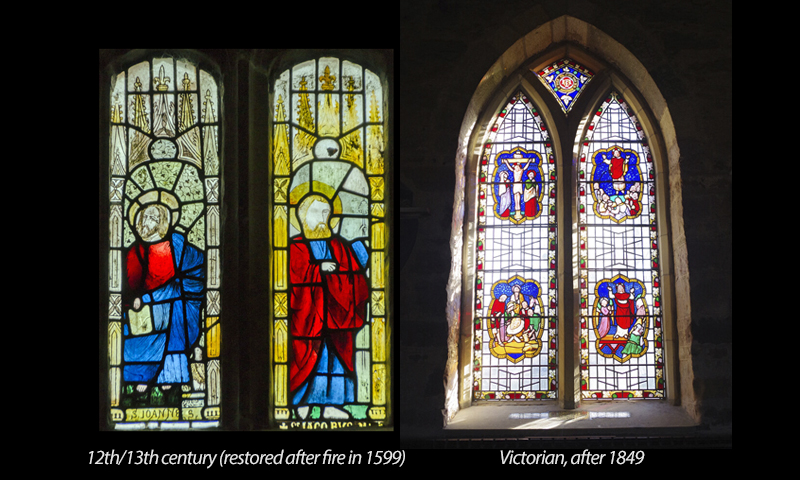
Stained glass church windows
Two Northumbrian clergymen, Wilfrid (634-709/10) and Benedict (c.628-90), adopted the European idea of having stained glass church windows for their monasteries (home to the Venerable Bede, who described the event). The practice spread throughout the country, although examples only exist from the 12th century onwards, e.g. at Canterbury Cathedral, due to deliberate destruction.
Apart from the practical advantages of keeping out birds, intruders, distractions and the weather, the windows were a visual aid for Biblical instruction, memorials to wealthy patrons and a means of creating an awe-inspiring atmosphere conveying Christ’s “I am the Light of the World” message.
The early colours of blue, red and purple, which took on symbolic meanings, were produced by the addition of elements, including gold and silver, to the glass-making recipe. Later, when this became too expensive and more artistic detail was desired, vitreous paint in black, brown or dark red was brushed on. From the 1500s to the 1800s this was the main method used and windows became artists’ canvases, with the lead strips that hold the glass pieces together (called ‘cames’) being morphed into the design. From the mid-1800s, however, the use of coloured glass was revived and the techniques were combined in new ways.
(Images LtoR: Julian P Guffogg & Stephen McKay, both at geograph.org.uk / CC BY-SA 2.0)
